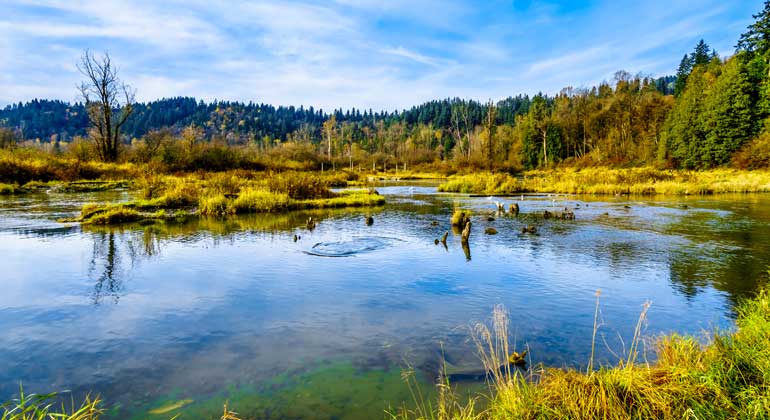Small waters, big concerns: climate change and water scarcity endanger ponds
This summer, the water shortage in Europe continues to preoccupy politicians and the public. The focus is mostly on larger rivers, lakes and groundwater. New IGB Dossier shows options for action.
But while society looks anxiously at their respective water levels, other water bodies have already long since disappeared: Small standing water bodies such as natural or artificial ponds, kettle holes or park waters suffer particularly from the lack of water. Across Europe, they are recording historic lows, many have dried up completely. Small standing waters are overlooked and underestimated because of their small size – yet they account for more than 30 percent of the world’s inland water bodies and are of great ecological and social importance. In order to raise awareness of this problem and to point out options for action for policymakers, authorities and the civil society, IGB has today published a new IGB Dossier on this important type of water body.
“Small natural or near-natural standing waters are often biodiversity hotspots and can therefore be considered ‘little oases’. But water shortages, increasing pressure of use and climate change with its weather extremes have serious consequences for these ecosystems and all the plant and animal species that depend on them,” explained IGB Director Professor Luc De Meester. “But it’s not just nature that is at stake – the ecosystem services that these small water bodies provide to humans in their entirety are also threatened. They can play an important role in water retention and flood protection and have a positive impact on the local micro-climate.”
Diverse ecosystem services despite small size
In the new IGB dossier, the research team also underlines that, depending on the type and region, small standing waters can serve many other purposes, such as watering livestock, irrigation or firefighting. In addition, small water bodies offer a variety of recreational opportunities that promote human health and quality of life, especially in urban areas. Next to these multiple societal benefits, small standing waters are of particular importance for freshwater life. Their contribution to regional freshwater diversity has been shown to be the highest of all inland waters – collectively they host 70 per cent of the regional freshwater species pool in European landscapes. This is because they are numerous and regionally very diverse in their properties. Due to their size, small standing waters are at the same time particularly sensitive to the aforementioned disturbances.
New management approaches needed: pond landscapes as nature-based solutions
But not all small water bodies are the same, the authors also point out: Depending on the type, region and location, the requirements for protection, use and management can be very different.
”In the new IGB Dossier, we have therefore summarised the current state of research in a compact form and show ways in which small standing waters can be better protected, restored or newly created. Despite the worrying situation, small water bodies have a decisive advantage – ponds and pond landscapes are excellently suited as nature-based solutions to support adaptation to climate change and mitigation of its consequences,” explained Dr Thomas Mehner, IGB Vice Director and co-author of the IGB Dossier.
The focus should not only be on individual water bodies, but on their potential as a networked ecosystem. Such a network of temporary and permanent water bodies – a pond landscape or “pondscape” – can promote regional biodiversity in a particularly sustainable way. In addition, the researchers recommend, inter alia, to ensure sufficient quantity and quality of water supply to maintain small water bodies as valuable habitats, and the establishment of well-dimensioned riparian strips and buffer zones to mitigate harmful impacts on small waters.
- IGB Dossier: Small standing water bodies as biodiversity hotspots – particularly valuable, but highly endangered | Small standing waters are overlooked and underestimated because of their small size – yet they account for more than 30 percent of the world’s inland water bodies and are of great ecological and social importance. In order to raise awareness of this problem and to point out options for action for policymakers, authorities and the civil society, IGB has published an IGB Dossier on this important type of water body.
QUELLE
IGB / Leibniz-Institut für Gewässerökologie und Binnenfischerei 2023








